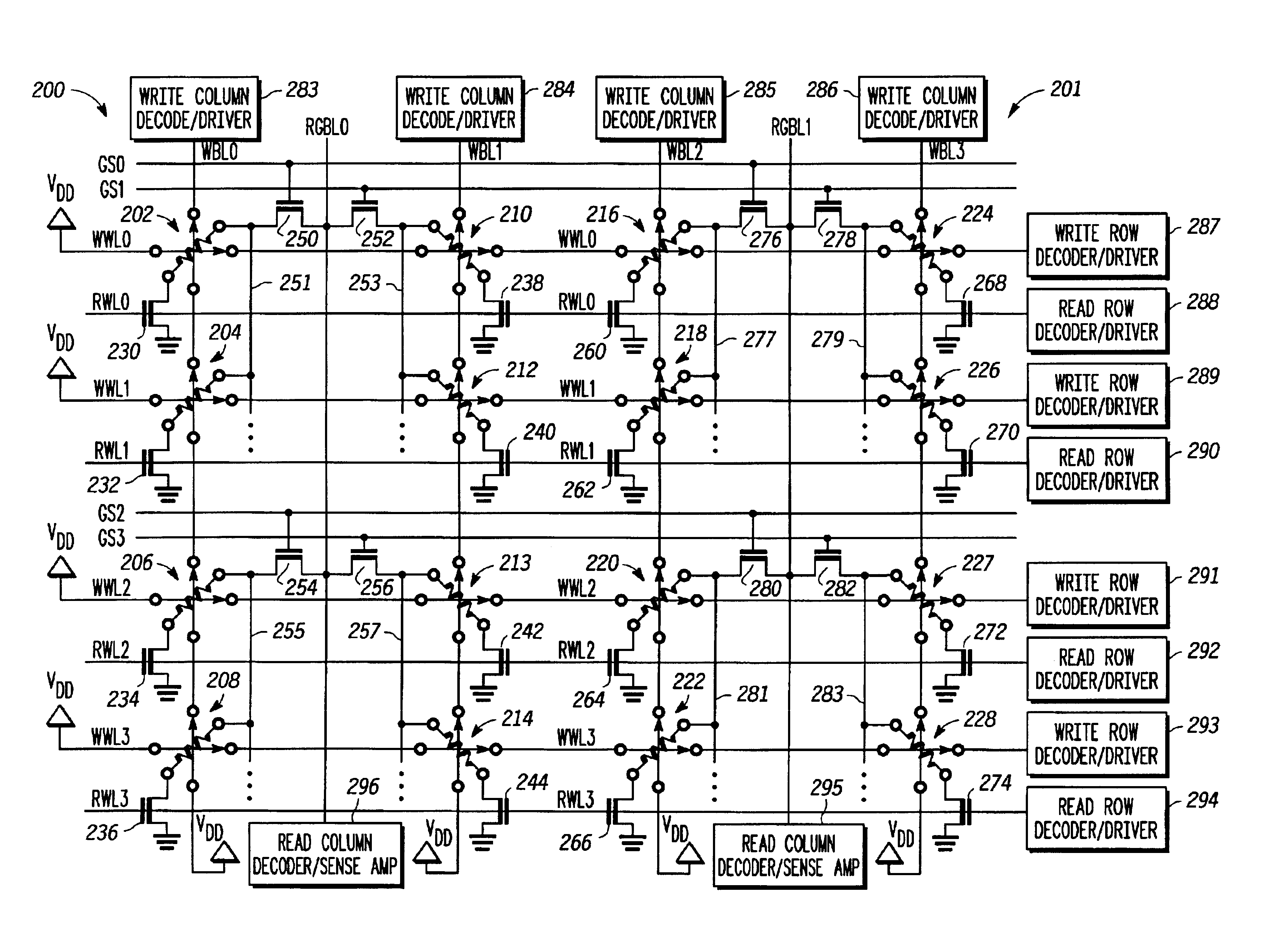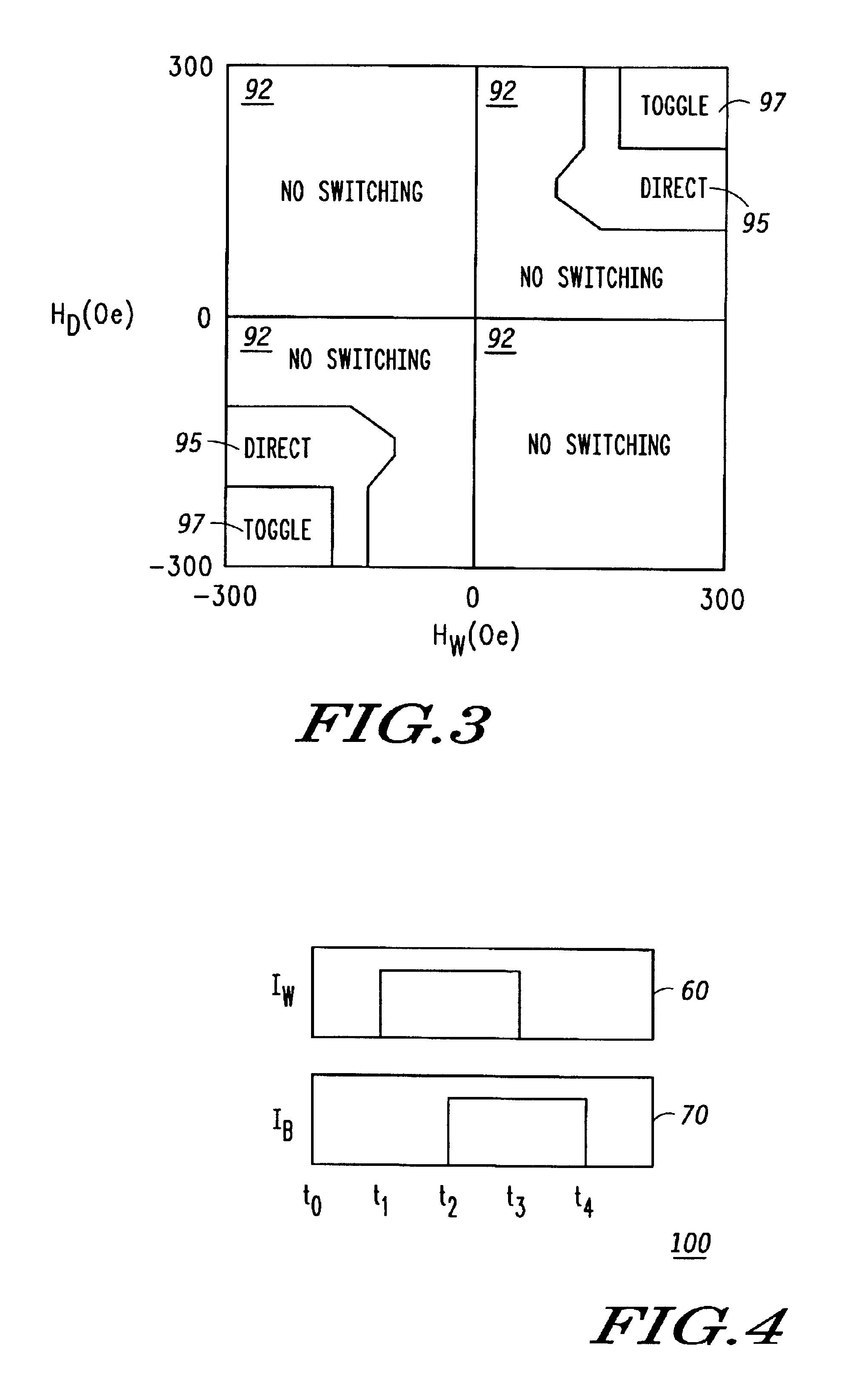MRAM architecture with electrically isolated read and write circuitry
a read and write circuitry, electrical isolation technology, applied in the direction of static storage, digital storage, instruments, etc., can solve the problem of bit cell performan
- Summary
- Abstract
- Description
- Claims
- Application Information
AI Technical Summary
Problems solved by technology
Method used
Image
Examples
Embodiment Construction
[0025]A memory architecture uses separate word lines for the read and write operations as well as separate bit lines for the read and write operations and is grouped into groups of bits with common local read bit lines. The groups are further folded so that two groups that are selectively coupled to the same global bit line share the same word lines. These characteristics provide the benefits of smaller write driver area, smaller average bit size for the memory core, allowing overlap between read and write operations, reduced global bit line capacitance, and higher voltage writing.
[0026]Turn now to FIG. 1, which illustrates a simplified sectional view of an MRAM array 3 in accordance with the preferred embodiment of the present invention. In this illustration, only a single magnetoresistive memory device 10 is shown, but it will be understood that MRAM array 3 consists of a number of MRAM devices 10 and we are showing only one such device for simplicity in describing the writing met...
PUM
 Login to View More
Login to View More Abstract
Description
Claims
Application Information
 Login to View More
Login to View More - R&D
- Intellectual Property
- Life Sciences
- Materials
- Tech Scout
- Unparalleled Data Quality
- Higher Quality Content
- 60% Fewer Hallucinations
Browse by: Latest US Patents, China's latest patents, Technical Efficacy Thesaurus, Application Domain, Technology Topic, Popular Technical Reports.
© 2025 PatSnap. All rights reserved.Legal|Privacy policy|Modern Slavery Act Transparency Statement|Sitemap|About US| Contact US: help@patsnap.com



